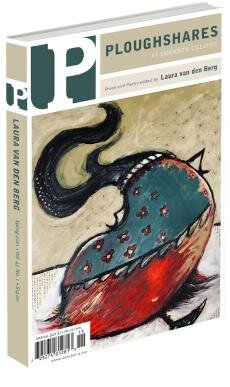This debut collection of stories by Patrick Earl Ryan set in and around New Orleans is pure magic. By that I mean, its primary concerns are magical, whether it be fairy lights, Shaolin-esque warriors, voodoo love spells, tall tales of demon possession, or just the magic of being a gay nineteen-year-old and touching another boy for the first time.
Like runes cast for purposes of divination, the wordcraft is concise, poetic, capitalizing on a strong southern voice. Many of the stories are also like poems, tending to the short. And they are deeply queer—queer to the bone—which is where this collection is most at home.
Add to all this a serious New Orleans-thing going on, and you’ve got some potent voodoo. Apparently, Roxane Gay thought so too, awarding the collection the 2019 Flannery O’Connor Book Series Award.
And for good reason. We are deeply imagined into a kind of Prospero’s Island. Here there be swamps. But also moonlight and old Cajun ways, a ratty New Orleans apartment, a roadside convenience store.
The opening story, “Before Las Blancas,” is one of the finest I’ve read in recent years. It is a tale of jeopardy and first love, heightened by the hot mess of hope and desperation that is the road trip. In it, a twenty-eight-year-old man and his thirteen-year-old lover are on the lam, hightailing it to Mexico. Lurking just below the surface is a sense of peril, due to the lovelorn narrator’s young age, and the fact their road trip exists both as a romantic getaway and a perceived kidnapping.
Subverting a reader’s expectations is a time-honored technique and Ryan uses it to good effect in two stories, “Cargo” and “Feux Follet.”
“Cargo” begins as something sweet, conventional: two men, long-time lovers, along with one of the men’s nephews drive a load of crabs to the market in Lafayette. The constant rain, alligators crawling out of the bayous, the threat of rising water, all contribute to the burgeoning sense of menace. After the lively setup, the story sours and curdles toward its luminous end.
“Feux Follet” introduces us to a superstitious man, proudly parochial, content within the confines of his one square mile of land. Our expectations for an imminent comeuppance unravel when the tale turns into one of repressed grief.
Exploring grief and remorse more overtly, “The Blue Son” is a story of a gay man with AIDS—veteran of the San Francisco bacchanalia—who has come home to New Orleans to die. Complicating this is the resentment of his mother, the anger and homophobia of his dead brother’s ghost, as the three bicker toward a begrudging acceptance.
As befits the Southern Gothic tradition from which many of these stories spring, most tend to the dark. There are several lighthearted tales, though. In “An Undisturbed Dark Place” two friends both have a crush on Kent. Kent, though, has the hots for a drag queen waiter/performer at a Chinese restaurant. So to win Kent over, the friends construct a magic love charm. From there, things slide into some big-hearted fun.
Magic casts its spell over two remarkable stories, heartbreaking and elegiac.
In “Where It Takes Us,” there are two brothers—one straight, though dying from AIDS, one gay. Add into the mix a fast car, a racetrack, a warm sunset, Led Zeppelin and you have all the ingredients for a magic even stronger than fairy lights or voodoo incantations.
In the astonishing titular story, the twenty-three-year-old virginal Christopher goes cruising for men and awkwardly snares the high-strung Mark, a boy who “takes life by the hair” (p. 111), a boy who says he is electric. Lightning strikes. Literally. And this exuberantly sad and gorgeous tale spills out.
There are other fine stories here as well, including the long, dream-like concluding one. Under the fantastical elements, in all of them the human lurks—grief, betrayal, love, fucking, violence—lensed through the conditions of poverty, desperate circumstances and class. There are no learned English professors here. No high-toned gatherings of the rich and famous. No circuit-party A-listers. But a convenience store clerk, a couple of down-on-their-luck stoners, a water-level inspector, a stock boy, a pump jockey and—thank God!—a martial arts and tai chi instructor currently living in San Francisco (Ryan), who through his writerly skill has conjured this delicious magic to life.
{ Cross-posted at goodreads. }
{ RETURN TO BLOG INDEX }


















